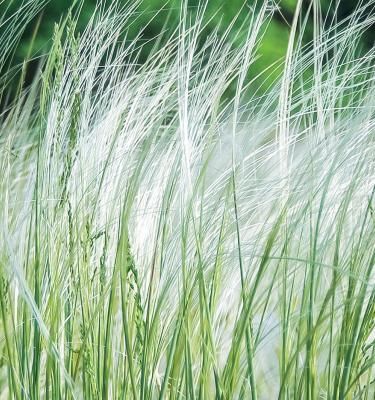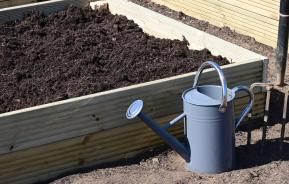There are hundreds if not thousands of different ornamental grasses which come in every shape, colour and size and these gracious and relatively easy to grow plants can make a wonderful addition to your garden or containers.
Whether you want to use them as a filler, to add texture and interest or as a screen or focal point, you’re almost certain to find an ornamental grass that is perfect for the job!
Different varieties of ornamental grasses
There is such an enormous choice of grasses, so before you get stuck into choosing a variety, it’s worth refining what you are looking for. Do you want clump-forming and are you looking for something that will look great and add colour all through the winter?
How high are you thinking of growing your grasses? Different grasses can range from the very short to the very, very tall. How much sun will your grass get and what’s your soil type? These are all key questions to ask as you start to narrow the field of choice.
Most ornamental grasses will come into flower from summer through into autumn but there are some that will continue to provide colour, structure and interest throughout the colder months.
Identify whether your preferred grass likes a cooler climate, such as the Helictrotrichon varieties like the bluestem or blue oat grasses (grey-blue clumps) or the Stipa varieties which include the Mexican and the giant, with their tall feathery quills.
Do they like warmer conditions such as the Miscanthus- which grows from between 1 foot to 20 foot tall and has a delicate pinky white, feathery plumage or the Spartina variety which can do well near to ponds or for that meadow look?
The key is not to rush into buying the first ornamental grass that you find but instead spend a bit of time getting to know the many different types such as maiden grasses, fountain grasses, pampas grass, rushes and even bamboo.
Using grasses to add colour, texture and interest to your garden
Here’s where the fun starts because you can use your ornamental grasses to add height, texture, colour, calm or drama and here’s just a few ideas to get you started:
Closely planted dwarf varieties of grass can make a fun and different flower border and soften a pathway or edge. They may continue to provide interest and cover throughout the winter.
Intersperse your grasses in groups of three amongst your other plants. This not only acts as a filler but can really add depth and interest to your display. Your plants and grasses don’t have to be the same height but what you want to achieve is an overall sense of balance between tall and small.
Try choosing grasses with a completely different texture to the plants they’ll be near. Think wispy plumes of silver, next to the heads of the round, yellow flowers of the Rudbeckia for example!
Try planting a fountain grass with its height and its gently splaying feathers to make a wonderful focal point in your garden. In a limited space, take three different sized containers and plant three different types of grass for a dramatic and unique display.
Go for contrast in colour, in height and in the shape of the grass. Bluey greys can work well with those purple reds and clumps can look good against wispy.
Or, for the opposite effect, go for identical grasses in three containers of different heights for a sense of calm and serenity or to break up and soften the harsh, clinical lines of a wall or backdrop.
Soften other garden features by planting grasses around them. Pots and other containers will blend much more effortlessly into your display with a little screening from your grasses.
Add the end of season colour with your grasses. Bluestem and switchgrass varieties are great for this and look fabulous in the early autumn light.
Go for a meadow effect in a quiet corner of your lawn with meadow grasses and wildflowers. It not only adds a touch of romance but is likely to be a haven for wildlife too.
Use ornamental grasses for screening
What would you like to hide? Is it an oil container, a compost heap or just an unsightly wall or fence? If you have a wire fence, feathery light grasses can provide just the right amount of screening. Enough to hide the wire but not to obscure the view beyond it, if that’s what you want to achieve.
For even more screening, try planting some taller, thicker varieties such as bluestem or moor grass in groups to hide those unsightly eyesores. There may be a short period of time when you cut your grasses back in early spring when you can see the offender, but it won’t be long until its hidden again.
The potential of ornamental grasses is endless and all you need is a little bit of space and a touch of creativity to achieve some really stunning, varied and beautiful displays.








